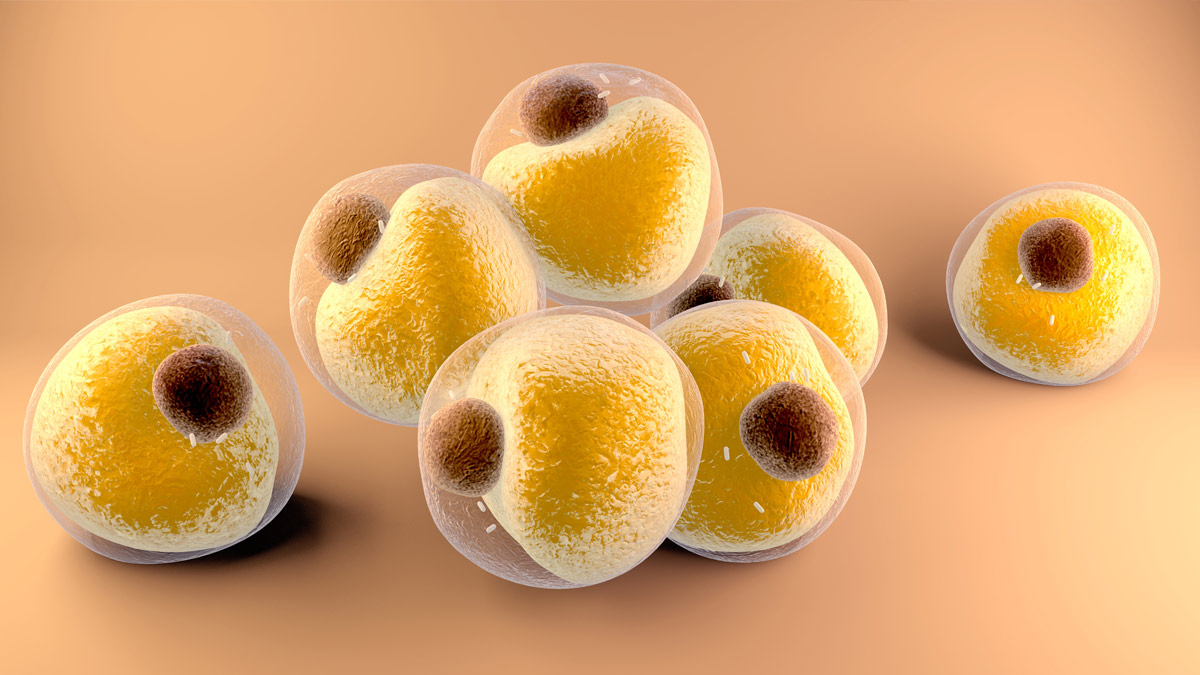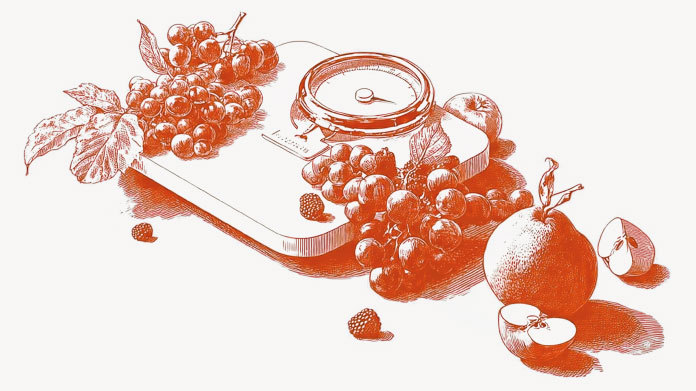What is thermogenesis? What can you do to boost it?
You may have heard that thermogenesis helps you lose weight, but what exactly is it? How does it work and how can you stimulate it to enhance a diet plan? SuperSmart has the answers.

Thermogenesis is the name of the process that generates heat in all warm-blooded animals. It allows them to maintain the constant internal temperature they need to survive. Thermogenesis also enables fats to be burned and converted into heat; thus when it’s not functioning properly, it’s sometimes blamed for causing excess weight and obesity. Lastly, thermogenesis is stimulated when the body has to defend itself against stress factors such as the cold or an infection: this is called adaptive thermogenesis.
Principal mechanisms of thermogenesis in humans
There are three main ways heat is produced in the human body: hormonal thermoregulation, diet and physical activity.
With the hormonal pathway, everything takes place in the hypothalamus, a gland located at the base of the brain, which controls a number of physiological processes. When the body gets cold, the hypothalamus triggers a warming action, prompted by various signals:
- shivering, caused by rapidly-repeated muscle contractions, immediately activates the release of heat;
- vasoconstriction, contraction of the blood vessels, reduces blood flow and helps retain heat;
- the release of adrenalin stimulates the metabolism and increases the body’s heat production processes.
In terms of diet, 40% of the food we ingest is used as fuel to produce heat, during digestion (1). The amount of energy expended in digestion varies. Lipids (fats) have the best ‘quality-energy’ ratio as they make the lowest demands on the body. Conversely, digesting proteins (followed by carbohydrates to a lesser extent) requires more energy and promotes greater dietary thermogenesis (2).
Last but not least, physical activity produces intense muscle movements as muscles contract and relax, which causes heat to be released.
Variations in thermogenesis
It’s important to note that the mechanisms of thermoregulation vary according to sex and age. In women of reproductive age, for example, body temperature increases during ovulation due to the effect of progesterone, whereas there’s a natural decrease in body temperature in older people.
Finally, when the body is subjected to an overly-strict diet and rapid fat loss, there’s a natural, long-lasting reduction in thermogenesis. This is referred to as starvation mode. It’s a mechanism that encourages fats to be stored, as they’re less energy-intensive. It’s thus responsible for the rapid weight gain that can occur when an individual stops dieting (3).
Brown adipose tissue : its role in thermogenesis and weight loss
This is a type of fatty tissue which is responsible for producing heat and can thus be found in hibernating mammals. It’s also present in humans, primarily new-born babies, and, to a lesser degree, in adults too, and even less so in obese individuals.
A specific protein in brown adipose tissue called UCP1 (or thermogenin) is responsible for emitting heat. This uncoupling protein encourages the release of heat to the detriment of energy production (4).
In addition, researchers have shown that excessive levels of certain amino acids (valine, leucine and isoleucine) are associated with obesity and diabetes. They also demonstrated that it is these amino acids which are used preferentially by brown adipose tissue for heat production (5). Stimulation of brown adipose tissue activity is therefore one of the most promising avenues of research for promoting weight loss.
What can you do to boost thermogenesis naturally?
Along with exercise, heat production can be stimulated by consuming foods and drinks with recognized thermogenic properties: chillies, and tea and coffee. These contain active principles (capsaicin and caffeine respectively) which stimulate the sympathetic nervous system, the main driver of thermogenesis (6). Ginger may also increase thermogenesis (7), and cinnamon may stimulate the ‘browning’ of adipose tissue (8).
Thermogenic supplements can also help to produce heat and thus increase average calorie expenditure. One such product is Advanced Fat Burner, an essential supplement that contains 5 natural ingredients (inulin, green coffee, Coleus forskohlii, chromium, Garcinia and Sphaeranthus indicus) able to stimulate thermogenesis.
References
- TAPPY L., G. E. Dépenses d’énergie, composition corporelle et activité physique chez l’homme. Medecine/Sciences. 2000: 16: 1063-8.
- Westerterp KR, Wilson SA, Rolland V. Diet induced thermogenesis measured over 24h in a respiration chamber: effect of diet composition. Int J Obes Relat Metab Disord. 1999 Mar;23(3):287-92.
- Dulloo, Abdul & Jean, Jacquet & Seydoux, Josiane & Montani, Jean-Pierre. (2013). Comment les régimes amaigrissants font grossir : d’une perspective d’autorégulation de la composition corporelle. Cahiers de Nutrition et de Diététique. 48. 15–25.
- Palou A, Picó C, Bonet ML, Oliver P. The uncoupling protein, thermogenin. Int J Biochem Cell Biol. 1998 Jan;30(1):7-11.
- Yoneshiro, T., Wang, Q., Tajima, K. et al. BCAA catabolism in brown fat controls energy homeostasis through SLC25A44. Nature 572, 614–619 (2019).
- Hursel, R., Westerterp-Plantenga, M. Thermogenic ingredients and body weight regulation. Int J Obes 34, 659–669 (2010).
- Mansour MS, Ni YM, Roberts AL, Kelleman M, Roychoudhury A, St-Onge MP. Ginger consumption enhances the thermic effect of food and promotes feelings of satiety without affecting metabolic and hormonal parameters in overweight men: a pilot study. Metabolism. 2012;61(10):1347–1352.
- Kwan HY, Wu J, Su T, et al. Cinnamon induces browning in subcutaneous adipocytes. Sci Rep. 2017;7(1):2447.
Keywords
8 Days
A Product worth waiting for when not…
A Product worth waiting for when not available and then arriving as a surprise!
DOMINIC
9 Days
On time shipping
On time shipping
GEORGE Verne
11 Days
Ordering was easy and the product was…
Ordering was easy and the product was delivered with no problems. Appreciated that I was notified when it would arrive. Thanks!
MascarC
17 Days
Great customer service - responsive …
I ordered from them and my item was unavailable for sometime. I was super happy when they reactivated my order and shipped my item which arrived very quickly. Great customer service.
Ruth Rueter
18 Days
Super fast shipping
Super fast shipping
Donald Borling
21 Days
Reputable companysearch and the number of…
The research and the number of selection of products.
NAKHJAVAN Shervin
34 Days
The Anti Aromatase is a great product
The Anti Aromatase is a great product. You just need to have constant inventory. Recently this product has been out of stock.
GEORGE Verne
35 Days
Great help on chat
Great help on chat. Knowledgeable and friendly.
Jason Argos
39 Days
Customer service was fast and friendly.
Customer service helped to stop the transaction process of the subscription. I appreciated that.
Greenie
39 Days
I order here due to the high quality of…
I order here due to the high quality of the products and the quick delivery of items - thank you
Barbara J
40 Days
SuperSmart's Eye Pressure supplements: highly recommended!
I purchase SuperSmart's Eye Pressure supplements regularly for over 5 years, and gotta say they are truly a wonderful product for my Glaucoma. Highly recommended if you have eye pain from your Glaucoma.
D. Martinez
45 Days
Quick service
Quick service
MONELL
46 Days
Speedy service.
Speedy service.
ROSENTHAL Marvin
49 Days
Clear website- Efficient
Clear website. Excellent search engine and fast delivery!
Mohamad Hussein
52 Days
They have great products.
They have great products.
Vickie



